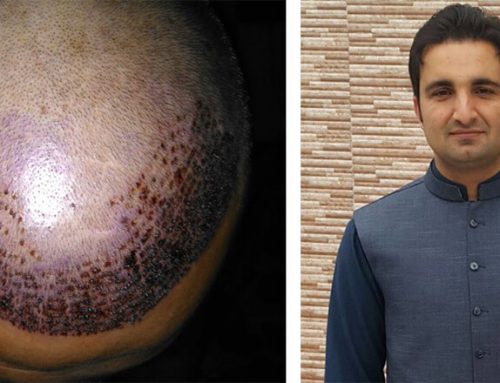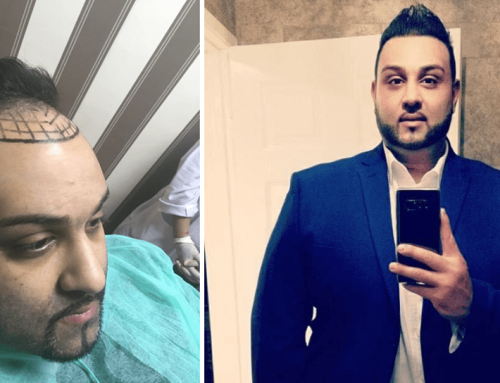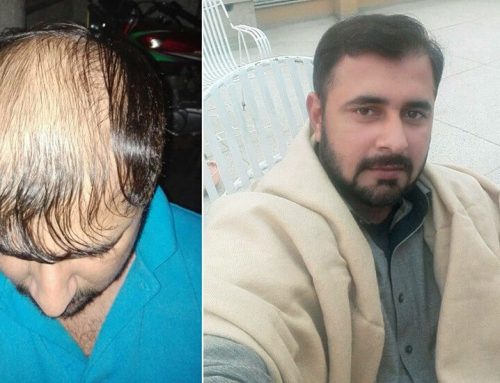Aging, hormonal changes and genetic history of baldness (baldness). As the hair loss starts earlier, they will be more intense. Other causes for hair loss are trauma, burns, in which this intervention falls in reconstructive surgery techniques.
Types of interventions by Best Surgeons of Islamabad hair transplant centers are:-
Hair transplants
The procedure consists in covering areas balding hair. This is done by removing some parts of hairless scalp to other parts of the scalp containing several hair roots, areas with hair. These hairs will grow into new areas, and, in time, will develop and hair follicles. Depending on the degree of baldness, the number of grafts needed and duration of treatment may vary. Subsequent interventions may be required. The technique may allow more small scars at sites of mining areas hair (donor areas), but usually these scars are not easily noticed.
Hair replacement
A surefire way baldness treatment is to replace unhealthy hair follicles of functional follicles of the neck and the sides of the head. Laser hair removal based on this technique seems overloaded with balding areas, improving the overall appearance of hair in a natural way, with minimal side effects.
Before surgery
People with baldness can choose from many cosmetic treatments to restore the image. Though hair implants are one of the most popular, it is not the only option. You can choose other types of best hair transplant in Pakistan if the price is convenient and efficient.

The reality
This interent skin is very secure, due to the simplicity and safety demonstrated in hair restoration. In reality, many people choose own hair instead of artificial techniques because they offer replacement guarantees bald areas with healthy follicles from other areas of the scalp (neck, the sides). This treatment can be considered a cure for baldness.
After surgery
After inerventia hair replacement, require special attention and nourish hair. Beyond local care to hair placed in new areas is bound by a healthy diet, together with avoiding extreme weather conditions. If areas of origin – neck and the sides – are healthy, then hair growth will be appropriate.
Transplantation of scalp flaps
Scalp transplant is done when the sides of the scalp (above the ears) and the neck are covered with hair. A thin and long scalp area of the hair-bearing, extract and place over an area of baldness to create a strip with normal hair growth.
As part of treatment, bald parts of the scalp can be removed. The donor area is covered by stretching the scalp area opposite. This procedure can replace the hair over large areas. Hair growth seems natural and narrow scars are hidden in the hair follicles.
Reducing the scalp (excision series)
This is the removal of an area as large as possible scalpel hairless, the first intervention.
Surrounding areas, containing hairs, are close to the stretch of bald area while still maintaining natural hairless certain areas. The technique is repeated once or several times subsequently, with the objective reconstruction balding area.
Tissue expansion
A tissue expansion device is placed in an area of hair growth near the balding area. After several weeks, the device causes new skin s. Later, through another surgery, new skin s are placed over areas of baldness.
Candidates dealing this hair replacement procedure should have normal growth of hair on the neck and the sides of the head. These areas are places in which donor grafts are extracted surgically strips.
May be general or local anesthesia (in combination with sedatives), keeping the patient awake but relaxed.
For a complete efficiency requires several rounds of intervention. After each inning require a recovery period of several months. To obtain the complete result (complete hair transplantation) is required during surgery to up to two years. A month or two after surgery, new hair implant (graft) hair will fall normally, and of interim. After another month will resume hair growth.
To close to the natural appearance results, an adjustment procedure (touch-up) may be necessary. It consists of using a combination of mini-grafts or cuts to fill or blend hairline.






